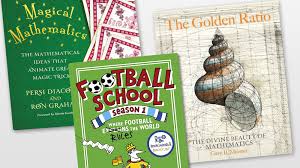Math. The word itself might conjure up images of dusty textbooks filled with equations, or memories of late-night cramming sessions. But what if we told you math is all around you, woven into the very fabric of our world? From the music you listen to, to the clothes you wear, math plays a surprising and fascinating role in our everyday lives.
So, ditch the misconception that math is confined to classrooms and textbooks! Today, we embark on a journey to unlock the magic of math, exploring its unexpected presence in seemingly non-mathematical areas.
1. The Symphony of Numbers: Math in Music
Music may seem like a purely creative pursuit, but it’s deeply rooted in mathematical principles. From the harmonious sounds of an orchestra to the pulsating beats of your favorite song, math dictates the structure and beauty of music.
- Harmony and Ratios: Musical notes have specific frequencies, and pleasing harmonies arise from specific mathematical ratios between these frequencies. For example, a perfect octave has a 2:1 frequency ratio, creating a sense of consonance.
- Rhythm and Time Signatures: Math governs the rhythm of music. Time signatures like 4/4 or 3/4 dictate the number of beats per measure and the note value that receives one beat. Understanding these concepts allows musicians to create complex and rhythmic patterns.
- Musical Scales: The scales that form the foundation of melodies are built on mathematical relationships. The major scale, for instance, uses specific intervals between notes to create a familiar and pleasing sound.
Understanding these mathematical principles not only enhances music appreciation but also empowers aspiring musicians to compose and perform with greater precision and control.
2. The Art of Proportion: Math in Fashion Design
Fashion might seem like a realm of creative expression, but math plays a crucial role in creating garments that flatter and fit well.
- Proportions and Symmetry: Designers rely on mathematical ratios to create garments that are visually balanced and aesthetically pleasing. The golden ratio, for instance, is a mathematical proportion found in nature and often used to create visually harmonious clothing patterns.
- Pattern Drafting and Measurements: Transforming a designer’s vision into a wearable garment requires meticulous drafting and measurements. Designers use mathematical formulas to create patterns that correspond to different body sizes, ensuring a proper fit for various figures.
- Textile Design and Geometry: From intricate patterns on fabrics to the geometric cuts of clothing, math plays a role in textile design. Understanding geometric shapes and their properties allows designers to create visually stunning and structurally sound garments.
So, the next time you admire a well-tailored outfit, remember – math plays a silent but significant role in its creation.
3. The Architect’s Toolkit: Math in Building Design
From towering skyscrapers to cozy cottages, math is the invisible hand that shapes the built environment.
- Geometry and Structural Stability: Architects rely on geometric principles like triangles and arches to ensure buildings are structurally sound and can withstand various forces. Calculating load-bearing capacities and stresses on building materials all involve complex math equations.
- Scale and Proportion: Buildings that are visually pleasing often adhere to principles of proportion. Architects use mathematical ratios to create structures that are balanced and aesthetically harmonious.
- Space Optimization and Floor Plans: Maximizing space and creating functional layouts requires mathematical calculations. Architects use formulas and software to design rooms, hallways, and entire buildings that are efficient and user-friendly.
So, the next time you marvel at the grandeur of a building, remember the invisible force of math that holds it all together.
4. The Culinary Equation: Math in Cooking
Baking a delicious cake, simmering a perfect stew – even culinary creations involve a surprising amount of math.
- Conversion and Scaling Recipes: Following recipes often involves converting measurements like cups to grams or scaling recipes for different serving sizes. Understanding fractions and proportions is crucial for achieving consistent results in the kitchen.
- Kitchen Chemistry and Ratios: Baking relies on precise ratios of ingredients to create the right chemical reactions. The perfect balance of sugar, flour, and leavening agents ensures a light and fluffy cake. Math helps maintain this delicate balance.
- Temperature Control and Cooking Times: Cooking times and temperatures are often dictated by mathematical formulas. Understanding heat transfer and conversion between Fahrenheit and Celsius is crucial for achieving perfectly cooked meals.
So, the next time you whip up a culinary masterpiece, remember – you’re not just a chef, you’re a kitchen mathematician!
This is just a glimpse into the vast universe of math hidden in plain sight. From the video games you play to the sports you watch, math is present, shaping experiences and pushing the boundaries of human potential.
So, how can you actively incorporate this newfound appreciation for math into your daily life? Here are some tips:
- Play “Math Spotter”: Challenge yourself to identify math concepts in your everyday activities. Is there symmetry in the architecture of your school? Are there geometric shapes in the patterns on your clothes? Keeping an eye out for math in everyday life makes learning fun and engaging.
- Explore Math-Related Hobbies: Do you enjoy video games? Explore the complex algorithms and physics simulations that power them. Are you passionate about music? Delve deeper into music theory and the mathematical foundation of harmony and rhythm. Connecting your hobbies to math can make learning more enjoyable.
- Utilize Gauth as Your Guide: Gauthmath.com isn’t just about solving equations; it’s a gateway to exploring the fascinating world of math. Utilize its features to delve deeper into the math behind your favorite activities, hobbies, or even career aspirations.
Ready to unlock the magic of math in your world? Explore Gauth’s engaging features, from step-by-step explanations to interactive practice problems. Discover how math is ore than just numbers, and embark on a journey of learning that’s both fun and rewarding!
